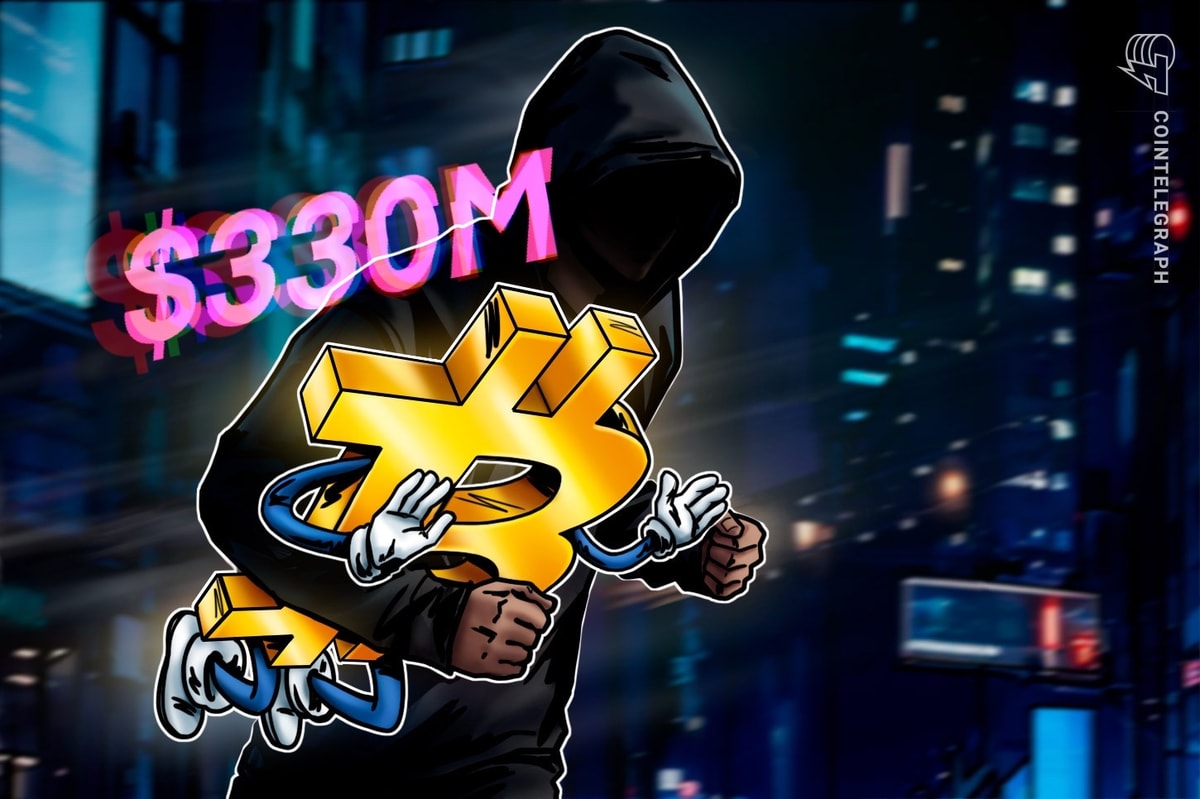Even now, years after Bitcoin [BTC] reshaped finance, its creator remains a shadow. Who was Satoshi Nakamoto? It all kicked off back in the chaos of Halloween 2008. While banks were getting bailed out, a paper titled “Bitcoin: A Peer-to-Peer Electronic Cash System” landed in the inbox of cryptography enthusiasts.
Nakamoto’s idea was simple but revolutionary: let people send money directly, no banks needed, using clever tech to stop anyone spending the same digital coin twice. A few short months later, January 3rd, 2009, the network sparked to life. Satoshi mined Block 0, the Genesis Block.
Genesis: Flipping the Switch on a New Money Era
That first block, the Genesis Block on January 3rd, 2009, wasn’t just about creating the initial 50 BTC (coins that, curiously, can’t be spent). It carried a message, baked right into the code: “The Times 03/Jan/2009 Chancellor on brink of second bailout for banks.” Part timestamp, part political statement. It yelled Bitcoin’s purpose from day one: an answer to a shaky financial world.
Things moved fast then. Version 0.1 of the software appeared January 9th (Windows first). The very first real transaction? January 12th. Satoshi zapped 10 BTC over to Hal Finney, a crypto pioneer who’d jumped on the software immediately.
For about eighteen months, Satoshi was hands-on, guiding development, tweaking the code, talking shop on forums and email. But then came the fade. Gavin Andresen, a key developer, got the keys to the code repository. Domain names changed hands. By spring 2011, Satoshi went silent.
Under the Hood: How Bitcoin Actually Works (PoW & SHA-256)
Bitcoin runs on a clever mix of math puzzles and rewards. Think of Proof-of-Work (PoW) and the SHA-256 algorithm as its heart and lungs.
- Proof-of-Work (PoW): The Great Consensus Race. How does a network with no boss agree on what’s true? PoW is the answer. Miners, participants scattered globally, grab pending transactions. They bundle these into a potential block. Then, the race starts: find a special number (a “nonce”). When this nonce gets mixed with other block data (like the hash of the previous block, connecting the chain) and run through a cryptographic grinder (hashing), the output must hit a specific target – basically, be a number smaller than a certain value. Finding this nonce takes serious computing power, the “work.” The first miner to crack it broadcasts their block. Other computers quickly check the answer (checking is easy, finding is hard). If it’s valid, the block joins the chain. The winning miner gets fresh BTC (the block reward, famous for halving every few years) and any fees from transactions in their block. To keep blocks coming roughly every 10 minutes, the puzzle difficulty automatically adjusts every 2016 blocks. Harder if blocks are found too fast, easier if too slow. This computational arms race makes rewriting history incredibly expensive (the infamous >51% attack), securing the ledger. The big downside? It uses a lot of electricity.
- SHA-256: Bitcoin’s Cryptographic Swiss Army Knife. The specific hashing tool Bitcoin relies on is SHA-256. Developed by the NSA back in 2001, it’s a known quantity. Give it any data, big or small, and it spits out a unique 256-bit string (looks like 64 random letters and numbers). Its key traits? It’s consistent (same input always gives same output), it’s a one-way street (you can’t get the input back from the output), finding two inputs that give the same output is practically impossible (collision resistance), and changing even one tiny bit of the input totally scrambles the output (avalanche effect). Bitcoin uses SHA-256 all over the place:
- The mining puzzle itself heavily involves SHA-256 (actually, double SHA-256).
- Creating your Bitcoin address starts with SHA-256 hashing your public key (then another function, RIPEMD-160, is used).
- When you send BTC, the transaction details are hashed with SHA-256, and that hash gets digitally signed using your private key (with ECDSA), proving it’s yours and hasn’t been messed with.
Satoshi didn’t invent these tools. PoW ideas were floating around (Adam Back’s Hashcash against spam, Hal Finney’s RPOW). SHA-256 was a government standard. The magic was putting them together this way – using SHA-256 for a PoW system, tied to public keys, on a peer-to-peer network with a shared ledger – to finally build decentralized digital cash that worked.
Digital Rebels: Cypherpunks and the Quest for E-Cash
Bitcoin didn’t just appear out of nowhere. It grew out of decades of dreaming and tinkering by the cypherpunks. Starting in the late 80s, heating up in the early 90s with their mailing list, these folks saw strong cryptography as a weapon for freedom. Their mantra, laid out in Eric Hughes’ 1993 “A Cypherpunk’s Manifesto,” was basically: privacy is essential, governments and corporations won’t give it to you, so “Cypherpunks write code” to take it.
Lots of projects tried and failed, but each left clues:
- DigiCash: David Chaum’s early 90s attempt. Had cool anonymity tech (blind signatures) but needed a central server run by his company. Died commercially.
- b-money: Wei Dai’s 1998 concept. Talked about decentralized ledgers and PoW for making money. Never fully built, but Satoshi directly referenced it.
- Hashcash: Adam Back’s 1997 anti-spam tool. Made sending email computationally “costly” using PoW (SHA-1). Not money, but the PoW idea was key.
- Bit Gold: Nick Szabo’s late-90s vision. Users solve PoW puzzles, creating digital value. Very Bitcoin-like conceptually, but stayed on the drawing board.
- RPOW: Hal Finney’s 2004 system built on Hashcash. Let people trade PoW tokens, but needed a central point for verification.
- e-gold: A popular 90s/00s system letting you trade ownership of real gold online. Centralized, eventually shut down by regulators.
Bitcoin’s 2008 arrival took the best bits – PoW from Hashcash/b-money (using the stronger SHA-256), public keys for ownership, a distributed ledger – and combined them to finally solve double-spending without a central point of failure. It delivered what the cypherpunks had been chasing.
Who Is This Satoshi Guy, Anyway?
Years of digging, and Satoshi Nakamoto remains a ghost. Forum posts and the whitepaper hint at British English (“bloody hard,” “optimise”). Posting times sometimes suggested North American hours. The C++ code was solid, but initially Windows-centric. The “Japanese man” persona? Widely seen as misdirection. Proving someone is Satoshi is theoretically simple (move early coins, sign a message with the original keys), but proving they aren’t is nearly impossible.
The rumor mill churns constantly:
- Hal Finney: Crypto legend, RPOW guy, got the first BTC transaction. Lived near a Dorian Nakamoto. Denied being Satoshi convincingly before his passing in 2014.
- Dorian Nakamoto: The engineer Newsweek famously (and likely wrongly) fingered in 2014 due to his name. He denied it fiercely, seemed baffled by Bitcoin.
- Nick Szabo: Bit Gold visionary, brilliant computer scientist. His ideas line up well. Consistently denies being Satoshi. A favorite suspect for many.
- Craig Wright: The Australian who has loudly claimed to be Satoshi since 2015. His “proofs” got shot down by experts. A UK court in 2024 bluntly ruled he is not Satoshi.
- Wei Dai: b-money creator, C++ whiz. Satoshi reached out to him. Dai downplays his role, thinks Satoshi likely had the core idea independently.
- Adam Back: Hashcash inventor, now Blockstream CEO. Exchanged emails with Satoshi early on. Always denies being the creator.
- Recent Theories (Less Credible): Speculation occasionally bubbles up around figures like Peter Todd (denied) or even Jack Dorsey (based on coincidences, strongly doubted by experts).
Notice a pattern? The serious contenders (Finney, Szabo, Dai, Back) were all deep in the cypherpunk scene or related crypto research before Bitcoin. They were working on the exact problems Bitcoin solved. This makes it almost certain Satoshi came from that world.
The Power of No Face: Why Anonymity Was Key
Satoshi staying hidden wasn’t just shy. It feels like a core design feature:
- Real Decentralization: No leader, no single throat to choke, no one person whose whims dictate the future.
- Trust the Code, Not the Cult: Bitcoin asks you to trust math and open-source code, not a person. An invisible founder fits that perfectly.
- Let the Community Grow: Without a boss, developers, miners, and users worldwide had to figure things out together (sometimes messily).
- Safety and Neutrality: Creating system outside government control is risky. Anonymity protected Satoshi from legal heat, political pressure, or worse. It also keeps Bitcoin from being tied to one person’s nationality or politics.
- Market Chill (Mostly): That giant stash of early BTC? If Satoshi suddenly appeared and moved it, markets could panic. Silence provides a weird kind of stability.
Satoshi’s vanishing act helped make Bitcoin what it is.
Growing Pains: Upgrades, Splits, and Bitcoin’s Civil Wars
Bitcoin hasn’t stood still. But changing a decentralized beast is hard. You need miners, developers, node operators, and users to mostly agree. It’s slow, often messy. Changes usually happen in two ways:
- Soft Forks (Think Polite Upgrades): These are backward-compatible. Old software can still understand the basics, even if it doesn’t use the new features. Generally preferred.
- SegWit (2017): Came after huge fights (“blocksize wars”). It tweaked transaction data storage (separating signatures, or “witnesses”) to fix a bug (malleability) and effectively boost capacity without raising the main 1MB block size limit. Crucial for things like the Lightning Network.
- Taproot (2021): A major upgrade. Brought in Schnorr Signatures (more efficient, better for multi-sig) and clever ways (Tapscript/MAST) to make complex transactions (like multi-sig or time-locked ones) look like simple ones on the blockchain. Boosts privacy, cuts fees, helps smart contract potential.
- Hard Forks (Think Messy Divorce): These change rules so drastically that old software rejects new blocks. If the community splits, you get two separate blockchains and coins. Usually happens over deep disagreements.
- Bitcoin Cash (BCH): Split off August 1, 2017. The faction that hated SegWit and just wanted bigger blocks (started at 8MB, now 32MB) for more on-chain transactions. Led by figures like Roger Ver. Still the biggest Bitcoin fork.
- Bitcoin SV (BSV): Split from BCH (not BTC) in November 2018. Craig Wright’s camp. Pushed for absurdly huge blocks (128MB -> Gigabytes -> ???) claiming it was “Satoshi’s Vision.” Highly controversial, hit by major security problems.
- Bitcoin Gold (BTG): Forked October 2017. Different goal: fight mining centralization from specialized ASIC hardware by using a GPU-friendly mining algorithm (Equihash).
These battles show the push-and-pull in decentralized governance: stability versus adaptation.
Conclusion: The Code Speaks Louder Than the Name
Maybe we’ll never know who Satoshi Nakamoto really was. But maybe it doesn’t matter as much as what they built. The Bitcoin algorithm cleverly wove together existing crypto tools to crack the puzzle of decentralized digital cash. Its launch, timed against a backdrop of financial crisis, introduced the world to blockchain.
The legacy isn’t just BTC’s price. It’s the explosion of decentralized tech, the ongoing challenge to traditional power structures, and the fundamental shift towards trust built on code. Satoshi lit a fire, and the sparks are still flying. The real question now isn’t just who started it, but where does this revolution go next?










